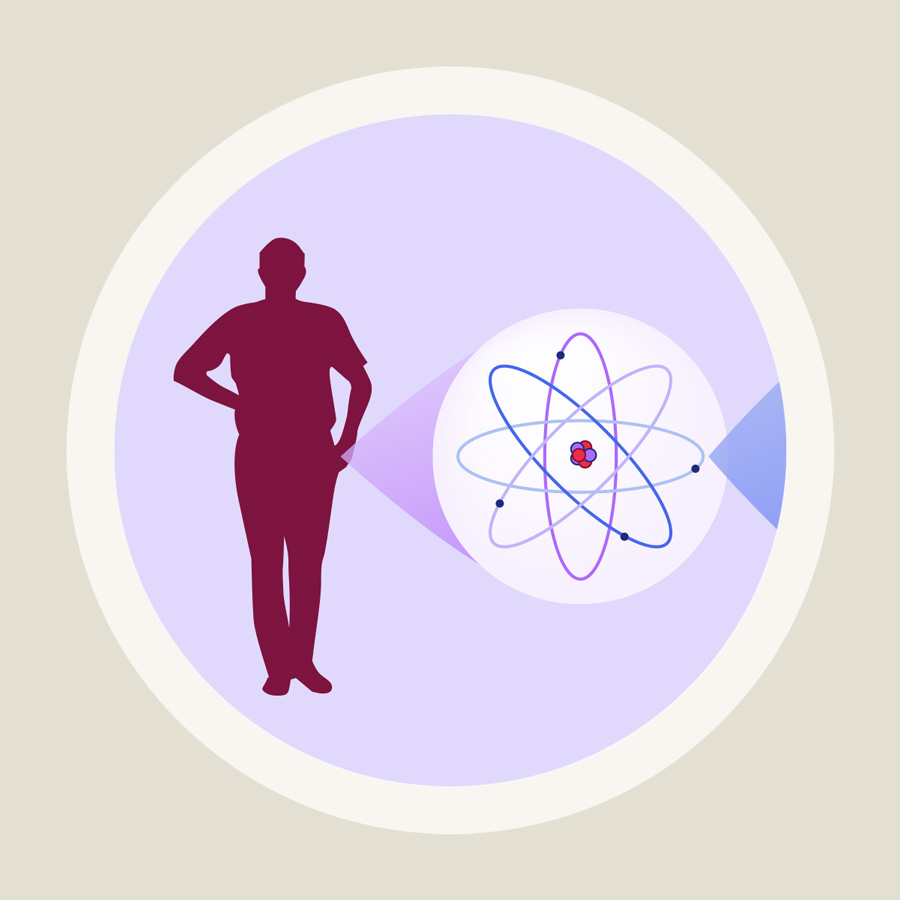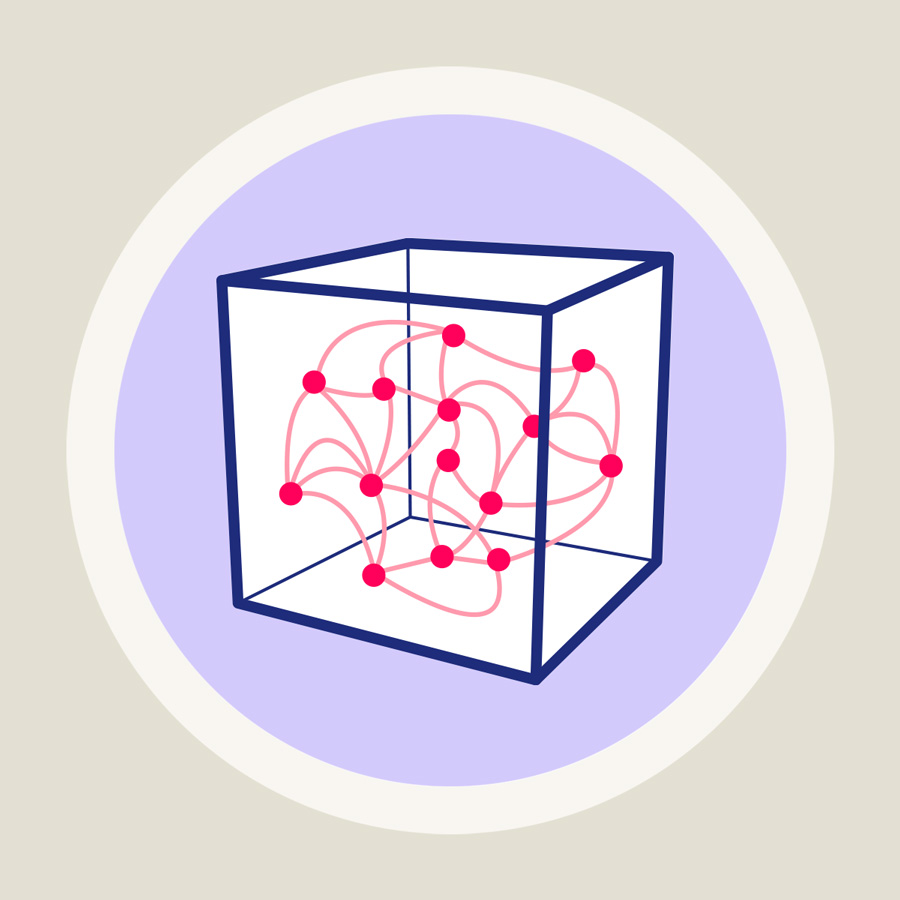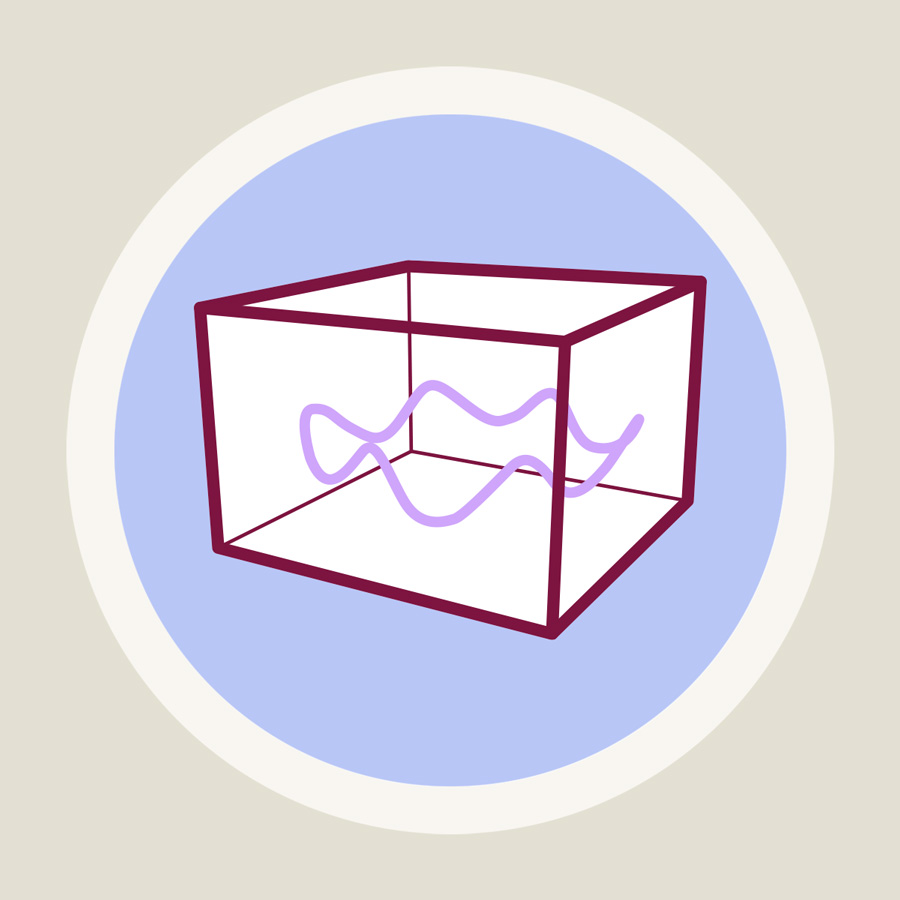General relativity is one of the pillars of modern physics. It governs the large-scale phenomena of the cosmos — from planetary orbits in the solar system to stars and galaxies — as well as the evolution of the universe as a whole.
Yet another pillar, quantum theory (which governs the properties of matter on microscopic scales), is at least as fundamental. Developed in the early 20th century, it forms the basis of elementary particle physics, governs the behavior of atoms, and lays the foundation of solid state physics. Wherever we go, we meet its applications — from laser pointers and CD players to the transistors in electronic devices.
Physicists have managed to formulate quantum theories describing electromagnetism and the elementary forces responsible for radioactive decay and the stability of atomic nuclei – theories that have been successfully tested at particle accelerators, and which include special relativity as an integral part.
However, a quantum theory of gravity is still missing — though not for want of trying. There are a number of promising candidate theories that hint at how quantum gravity might look, but so far, none of them solves the problem completely.
Relativity and the Quantum / Elementary Tour part 1: Relativity in the micro-world
Quantum theory and relativity theory are two products of the early 20th century, developed in parallel. Not surprisingly, physicists early on began thinking about the possibility of combining the two. Could one, for instance, formulate a relativistic theory of quantum particles? For special relativity, such thoughts were the beginning of a success story that continues […]
Relativity and the Quantum / Elementary Tour part 2: Evaporating black holes?
Can the concepts of relativistic quantum field theory be carried over to curved spacetimes, which include gravitational sources and are described by general relativity? The answer is a cautious “yes”. The most notable step in this direction was taken by the British physicist Stephen Hawking in the 1970s. Hawking examined a model of quantum particles […]
Relativity and the Quantum / Elementary Tour part 3: The need for quantum gravity
So far in the pages of Elementary Einstein, we have encountered two examples in which the limits of general relativity were reached. Both cases involved space-time-singularities. The first example lurked in the interior of a black hole. As briefly described in the section on black holes, inside every black hole is a spacetime boundary where […]
Relativity and the Quantum / Elementary Tour part 4: Loop quantum gravity
From the point of view of Einstein´s theory, it comes as no surprise that all attempts to treat gravity simply like one more quantum force (on par with electromagnetism and the nuclear forces) have failed. According to Einstein, gravity is not a force – it is a property of spacetime itself. is an attempt to […]
Relativity and the Quantum / Elementary Tour part 5: Superstrings and universal harmony
If you go by the number of researchers involved in it, string theory is the most actively studied candidate for a theory of quantum gravity. String theory is descended from the ordinary models of particle physics, but with a crucial difference: Its basic constituents are not point-like particles, but one-dimensional objects – strings. Strings can […]
Relativity and the Quantum / Elementary Tour: Conclusion
The combination of relativity and quantum theory has led to some of the greatest triumphs of theoretical physics, but also to its most persistent unsolved questions. The marriage of special relativity and quantum concepts leads to so-called relativistic quantum field theories – the basis of modern particle physics – and to a variety of predictions […]










